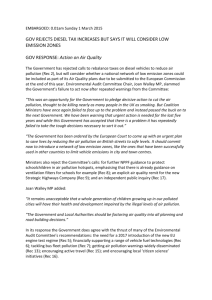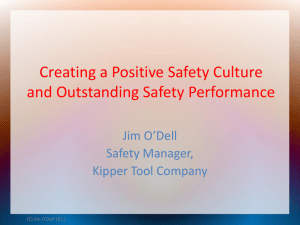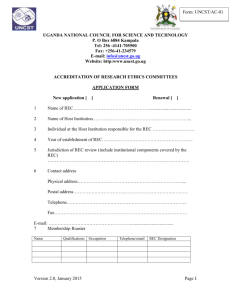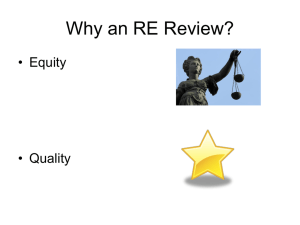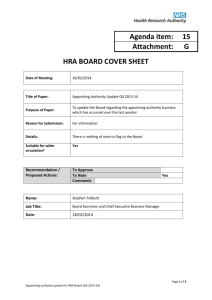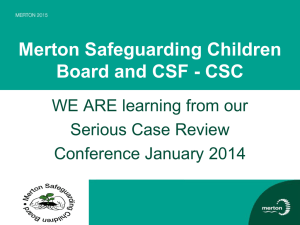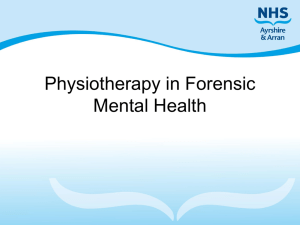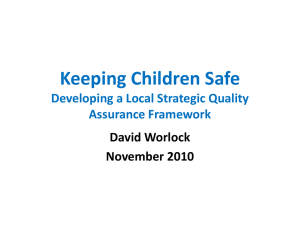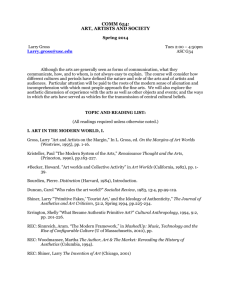Jacky Tiotto - The Munro Review of Child Protection
advertisement
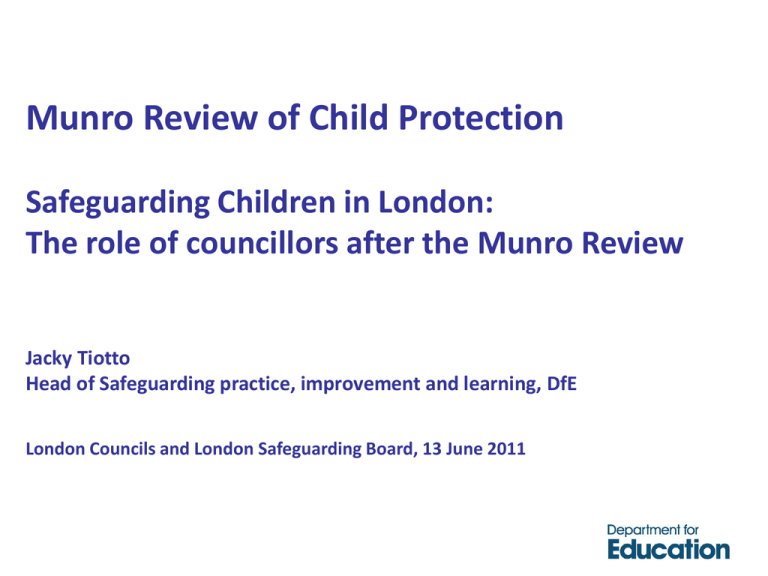
Munro Review of Child Protection Safeguarding Children in London: The role of councillors after the Munro Review Jacky Tiotto Head of Safeguarding practice, improvement and learning, DfE London Councils and London Safeguarding Board, 13 June 2011 the process review part of drive to improve the quality of child protection in England -10 June 2010 October 2010 First report: Analysis of unintended consequences of previous reforms February 2011: Interim report: Characteristics of an effective child protection system May 2011: Final report: Child- centred system and recommendations for reform the ‘givens’ • The recommendations to this review have to be understood and not implemented passively – there should be no cherry picking either • The child protection system is complex • The Commission on the Rights of the Child – protect and prevent • Abuse and neglect do not present in unambiguous ways • Predictions about abusive behaviour are necessarily fallible • The number of professionals involved makes co-ordination, communication and clarity of role an absolute ‘drive on left’ rule principles of a child-centred system • Child- centred • Family is the best place to bring up children and young people • Helping involves direct work • Early help better for children and young people • Variety of need reflected in helping responses • Good professional practice informed by theory and research • Uncertainty and risk accepted as intrinsic to the work • Most important measures of success are whether help is effective drivers of the system in recent years The child protection system in recent times has been shaped by four key driving forces: • the importance of the safety and welfare of children and young people • a belief held by many that uncertainty in child protection work can be eradicated • A tendency in inquiries to focus on professional error without examining the causes of any error • the undue weight given to performance information and targets headline messages • Children and young people not sufficiently seen and heard and continuity of relationships not valued • Bureaucratic processes drive and dominate professional practice • Shared professional responsibility to help families early – significance of universal services • Over-use of central prescription to improve practice, so cumulative effect is negative • The system is weighted towards responding to serious abuse and neglect with insufficient preventative, early help - Cuts to preventative services short-sighted what to aim for? a system that learns whether children are being helped and respects their need for help a system hearing and using feedback – children, young people , families and practitioners a system with professional freedom and strong accountable management and leadership a system that expects errors and so tries to catch them quickly a system that is dominated by direct work with families - the human element of the work valuing professional expertise Rigid prescription that has resulted because of pursuit to eradicate uncertainty with more rules Rules have compromised capacity for professional judgment Skill deficit noticed in SCRs but more rules the response Management practice focussed on process because inspection and performance targets dominate Direct work reduced as compliance with process is driver valuing professional expertise: recommendations Statutory Guidance – ‘Working Together’/Framework for Assessment of Need Inspection – beginning to end of help Performance data – information to study rather than indicators giving simple measure of success sharing responsibility for the provision of ‘early help’ Lots of assessment and not much help – expectations of help that does not happen Moral imperative to help early to reduce harm and efficiency gains Cuts to preventative services will create costs and worse outcomes what is there if not social care? All partners responsible for help Offer of early help on back of local process to understand need Know your community need and provide help sharing responsibility for early help: Recommendations New duty for local authorities and statutory partners to secure provision of early help: - specify against local profile of need - set out access to social work expertise for those in other services - provide local safeguarding and child protection training to help all professionals - have clear arrangements in place to make an ‘offer of early help’ developing social work expertise & the organisational context Voice of profession needed to influence and advise government Career path for social workers support them leaving practice as they get experienced Employers and HEIs to create higher standards for training and placement Local services build change of lead professional into system developing social work expertise & the organisational context: recommendations Capabilities, training and career structure for social work College of Social Work to set out capabilities for child and family social work, considering implications for employers, training establishments, career structures and regulators Employers and higher education establishments to prepare students for child protection work, including better placements Local children’s services Principal social workers in every LA – practicing senior managers Redesign services around consistent relationships with families and effective helping Voice of social work in government A chief social worker to advise government and bring voice of profession to policy clarifying accountabilities and creating a learning system Reviewing practice now is a Learning from practice defensive activity and the system is closed to learning – repeat messages from SCRs is the oxygen that will grow skills to exercise professional judgment E A R L Strong accountability spine, when much else locally is changing Additional duties will dilute DCS role. Improvement and Change programme need to be led by someone with dedicated attention on services N accountabilities and learning: recommendations Leadership • Statutory guidance revised to stress exceptional arrangements of DCS and lead member with additional functions • Research on impact of public health reforms on provision of help and protection LSCBs • Produce an annual report for most senior leaders of Local Authority, Health and Police • Strengthened monitoring of effectiveness of help (and early help), value for money, and multi agency training in safeguarding and child protection • To use systems methodology when undertaking serious case reviews, including government providing reviewers, disseminating learning to inform report of chief social worker • SCR evaluations should end local political accountabilities • Role of leader – recommendation about annual report from LSCB (rec 5) • Duty for Local authority and statutory partners to secure sufficient provision for early help, setting out arrangements including the resources available (Rec 10) • Inspection of child’s journey from needing to receiving help (rec 3) • Availability of data (rec 4) • Quality of social work environment, placements, supervision and first line management (rec 12) • Strengthened role of LSCB in monitoring effectiveness of help, including early help and multi- agency training (rec 6) • Statutory role of DCS and Lead Member and additional functions (rec 7) • Serious case reviews – learning and improving (rec 9) • Degree of child- centredness What you might see in local failure and what might you do? 1. 2. 3. What is the performance management system locally? What is it telling them and what are they doing about it? Who knows what about what professionals are doing with children and families and the impact this is having? Who in the leadership team has this information and what do they do with it? Some specifics: 1. 2. 3. 4. 5. 6. 7. 8. What are local social work caseloads? What are they doing with children in need, with child protection plans and those looked after? How often is supervision and what happens in supervision? How is the interface between universal services and social care managed? What do leaders and managers know about this interface and the safe identification of abuse and neglect? eg Hospitals, GPs, police and schools What is happening to contacts, referrals and decisions to act or not act? What services are there locally and is the range of need represented in the provision available? What happens to children with child protection plans? Who does what, when and to what effect? One inspection report I read said nothing about relationships, complex work and help! Ambition
